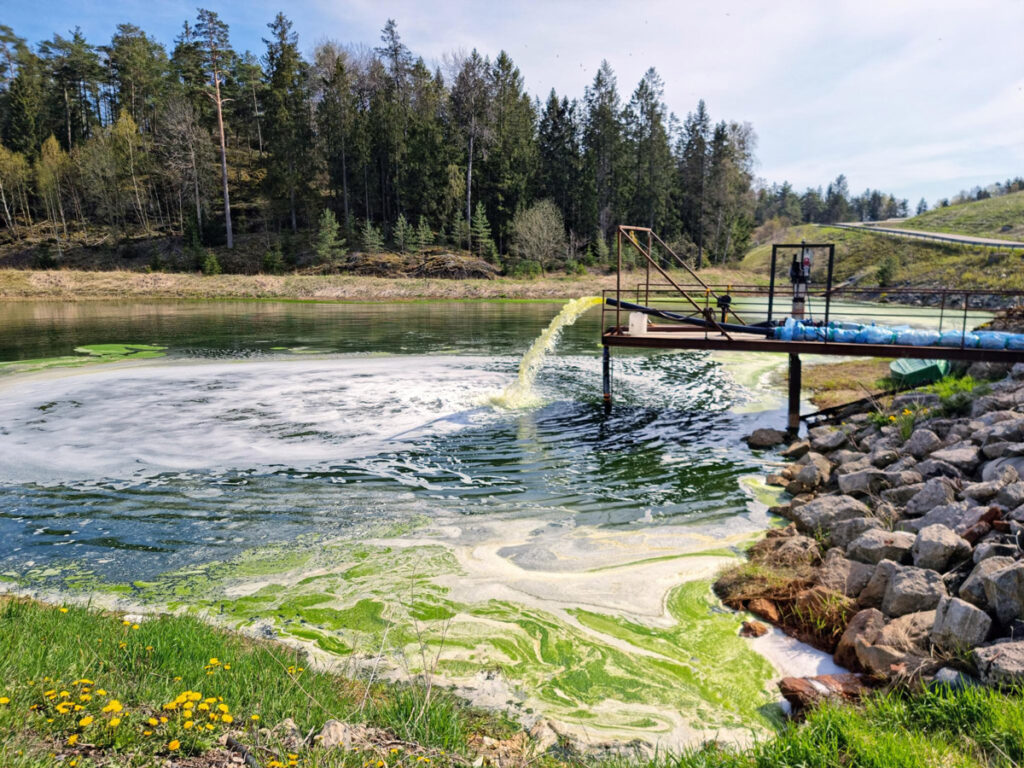Telge Återvinning
Client: Telge Återvinning AB
Assignment: Treatment of PFAS contaminated landfill leachate using Surface Active Foam Fractionation (SAFF).
Scope: Tveta Recycling plant and landfill is owned and operated by Telge Återvinning AB and is located in Södertälje, Sweden. Within the property, several collection ponds are situated, but all are connected to one large collection pond at the bottom of the landfill. As many materials and soils handled and deposited at the plant contains PFAS, the water in the storage ponds are contaminated with PFAS. Envytech is carrying out treatment of the water as the waste water treatment plant receiving the leachate water from the landfill has set a limit to the amount PFOS allowed to be discharged to the plant to 50 ng/l. This as the treatment plant have been rewarded with a REVAQ ceritification, allowing them to use the sludge produced as fertilizers on crop fields. The treatment is carried out using a full-scale SAFF40 treatment plant.


The leachate water contains a mixture of co-contaminants, as well as as nitrogen, phosphorus DOC, TOC, suspended solids and more. In summer, the pond also “produces” large amounts of larva and zooflagelats, as well as algae. This combined has led to all of the previous treatment trials performed with various filter technologies have failed.
The total amount of PFAS vary through out the seasons depending on the amount of rain or snow melt reaching the pond, but average concentrations ranges between 2000 – 4000 ng/l for PFAS Sum11, see table 3 for untreated leachate PFAS concentrations. The leachate is pumped straight into the SAFF40, using no pre-treatments except for two bag filters with 100 μm filter size. In periods where the algae and larva production have caused the bag filters to clog up rapidly, the filter socks have been removed, and no pre-treatment have been used without any lowering of treatment results.
The leachate is treated with a batch time of 18 min. The average flowrate is about 20 m3/h, resulting in treatment volumes of 500 m3/day. The treated water is released to the recipient, Himmelfjärdsverkens waste water treatment plant.
The treatment removal efficiency has been stable throughout the project, regardless of seasonal variations. PFOS concentrations are treated down to non detect in almost every sample, and the target criteria of 50 ng/l has never been exceeded. Treatment efficiency for PFAS4, PFOS, PFOA, PFHxS and PFNA are >99%. Treatment efficiencies of >99% are also achieved for PFNA, 6:2 FTS, PFHpA.
The treatment has been carried out since February 2020, when the plant was commissioned, and is contracted to stay at the Tveta site until September 2023. Treatment volumes up until now (June 2022) are recorded to approx. 150 000 m3 (150 000 000 liters).

Table 2: Presents PFAS removal efficiency for various dates throughout the 1,5 year project. Only minor variations have been noted, regardless of the seasonal changes. Average removal efficiency is calculated from all 26 samples taken in the period 2020-02-10 – 2022-04-20.

Table 3: Presents examples of inlet concentrations, outlet concentrations and removal efficiencies for various dates in different seasons throughout the project.